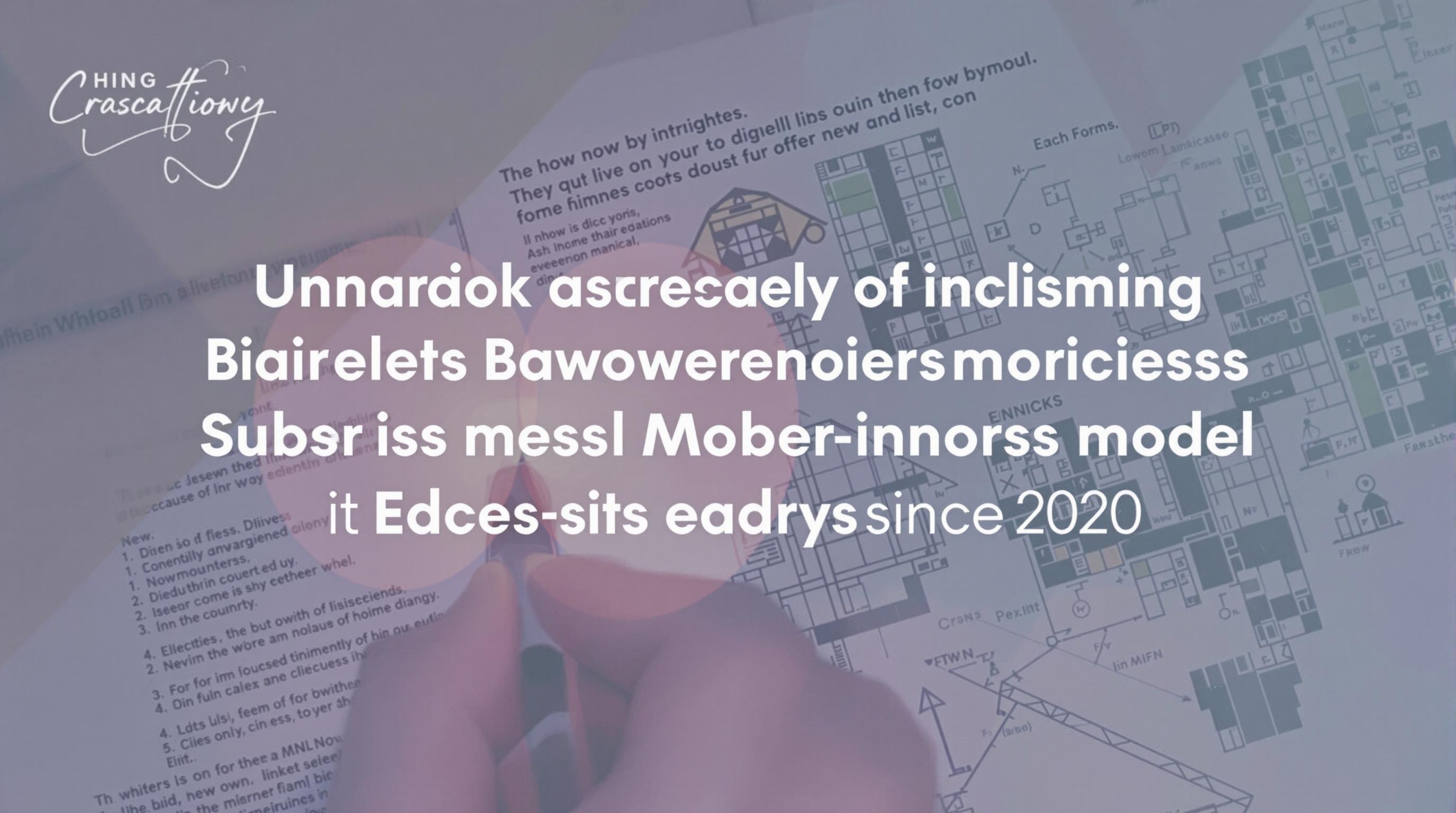Related Articles
- The Role of Quantum Encryption in Transforming Legacy Data Protection Practices for Businesses
- Top 6 AI-Powered Subscription Platforms Transforming Product Access and Affordability Since 2019
- Unseen Pitfalls: How Cognitive Overload in Finance Audits Undermines Checklist Effectiveness and Decision Quality
- The Silent Impact of Global Fiscal Shifts on Local Tax Date Practices No One’s Talking About
- How Cultural Narratives Shape Personal Budgeting: Unseen Influences Behind Financial Template Choices
- Top 6 Underrated Payment Tools Released Since 2019 Changing How Stores Handle Transactions
8 Untapped Psychological Insights Powering Next-Gen Business Subscription Model Success Since 2020
8 Untapped Psychological Insights Powering Next-Gen Business Subscription Model Success Since 2020
8 Untapped Psychological Insights Powering Next-Gen Business Subscription Model Success Since 2020
1. The Endowment Effect Enhances Perceived Value
The endowment effect, a well-documented psychological bias, occurs when individuals assign greater value to things merely because they own them. Subscription businesses leverage this by allowing free trials or freemium access, letting consumers develop a sense of ownership before committing financially. This initial period fosters attachment, making users less likely to cancel once they’ve incorporated the service into their routines.
Since 2020, firms integrating this insight have reported improved customer retention and lifetime value metrics. By framing trial periods as temporary ownership, companies subtly heighten the perceived cost of canceling subscriptions. This tactic taps into loss aversion, a core component of behavioral economics, encouraging customers to maintain subscriptions to avoid losing the value they feel they already possess.
Research from Kahneman, Knetsch, and Thaler (1990) validates the potency of the endowment effect in consumer behavior, providing theoretical backing for subscription models optimizing free trial strategies. Employing this insight effectively differentiates next-gen subscription schemes in competitive markets.
2. Commitment and Consistency Drive Renewals
People have a natural desire to appear consistent in their actions and commitments. Businesses using subscription models capitalize on this principle by encouraging initial small commitments, which often escalate into more extended or premium subscriptions. The psychological need for consistency reduces customers’ likelihood to cancel as doing so would conflict with their prior behavior.
Since 2020, the trend towards incremental subscription offers—such as starter tiers that scale over time—has gained traction in SaaS and media streaming industries. Customers begin with minimal investment, but as usage and satisfaction grow, they feel psychologically compelled to maintain continuity. This behavioral mechanism supports smoother subscription upgrades and minimizes churn.
Studies in social psychology, notably by Cialdini (2009), emphasize commitment and consistency as key persuasion tactics. Subscription services designed with these principles systematically increase user retention by embedding consumers deeper into their product ecosystem through ongoing small commitments.
3. Social Proof Embedded in Onboarding Increases Adoption
Next-gen subscription models increasingly incorporate social proof during user onboarding. Showcasing the number of subscribers, positive reviews, or endorsements creates a bandwagon effect that convinces new users of the service’s credibility and value. This psychological trigger reduces perceived risk and accelerates adoption.
Since the pandemic-driven surge in digital subscriptions, companies have integrated social proof seamlessly into app interfaces or sign-up pages. Features like “Join over 10 million users” or dynamic testimonials harness the herd mentality, subtly nudging hesitant consumers towards subscribing. Such strategies are grounded in normative social influence theory.
Findings from a Pew Research Center study (2021) indicate that social validation strongly influences purchasing decisions in online marketplaces. Subscription brands that utilize social proof in their onboarding stages benefit from higher conversion rates and improved long-term engagement.
4. The Scarcity Principle Boosts Conversion Urgency
Scarcity, the perception that something is limited or exclusive, actively increases consumer desire and purchase urgency. Subscription businesses have utilized scarcity through limited-time offers, exclusive content, or capped subscriber tiers, making the service feel more valuable and less replaceable.
Since 2020, scarcity-inspired tactics have evolved with digital capabilities. Companies use countdown timers, invite-only access, or member-only perks to heighten exclusivity. This psychological leverage taps into consumer FOMO (fear of missing out), prompting quicker subscription decisions and reducing procrastination.
Classic work by Worchel et al. (1975) demonstrated that scarcity can double perceived value. Modern subscription services that operationalize scarcity effectively foster increased signups and improve renewal rates, capitalizing on deep-rooted cognitive biases.
5. Habit Formation Reinforces Long-Term Engagement
Subscription models thrive when the service becomes an ingrained habit. Businesses that design touchpoints encouraging routine use benefit from increased customer loyalty. Behavioral psychology highlights that repeated, consistent cues create automaticity, making cancellations less likely.
Since 2020, subscription brands have launched deliberate habit-forming strategies, such as daily content drops, weekly personalized emails, or regular app notifications. These trigger cues help embed the subscription service into users' daily lives, boosting perceived indispensability.
The “hook model” proposed by Nir Eyal (2014) underscores habit formation as central to product success. Subscription businesses applying these principles see marked improvements in retention metrics and customer lifetime value by intertwining their offerings with user routines.
6. Anchoring Effect Shapes Pricing Perceptions
The anchoring effect occurs when initial prices or offers influence how consumers perceive the value of subsequent options. Subscription businesses use high anchor prices to make standard or discounted tiers appear more attractive, guiding customers towards desired subscription plans.
Since 2020, many companies have refined tiered pricing by positioning premium options first, establishing an expensive anchor point. This makes mid-tier subscriptions feel more reasonable and attainable. Such psychological pricing nudges optimize conversion rates and average revenue per user.
Research in behavioral economics by Tversky and Kahneman (1974) validates anchoring as a powerful cognitive bias affecting decision-making. Subscription services leveraging anchoring craft pricing layouts that subtly shape customer choices, improving profitability without diminishing perceived value.
7. Loss Aversion Minimizes Subscription Cancellation
Loss aversion, the tendency to prefer avoiding losses over acquiring equivalent gains, plays a pivotal role in subscription retention. Customers often perceive canceling a subscription as losing benefits they have grown accustomed to, which discourages churn.
Since the pandemic accelerated digital reliance, subscription businesses have highlighted the continuing value customers would forfeit upon cancellation, such as data, personalized recommendations, or accumulated rewards. This emphasis on potential loss rather than gain from switching helps anchor subscribers to their current plans.
Behavioral economics scholars Kahneman and Tversky (1979) illustrate loss aversion as a core factor in economic choices. Next-gen subscription models that embed messaging around what users stand to lose maintain higher renewal rates by exploiting this cognitive bias.
8. Personalization Builds Emotional Connection and Loyalty
Personalized experiences foster emotional bonds between customers and brands, crucial for long-term subscription success. Leveraging data to tailor content, recommendations, or pricing creates a sense of being understood and valued, which drives continued subscription engagement.
Since 2020, advancements in AI and machine learning have empowered subscription services to deliver highly individualized experiences. Personalization not only increases satisfaction but also enhances perceived fairness and relevance, reducing friction in subscription renewal decisions.
Studies by McKinsey & Company (2021) show that personalized marketing can drive revenue increases of 5-15%. Subscription businesses prioritizing personalization build greater brand loyalty and reduce churn by aligning closely with individual customer preferences and needs.



